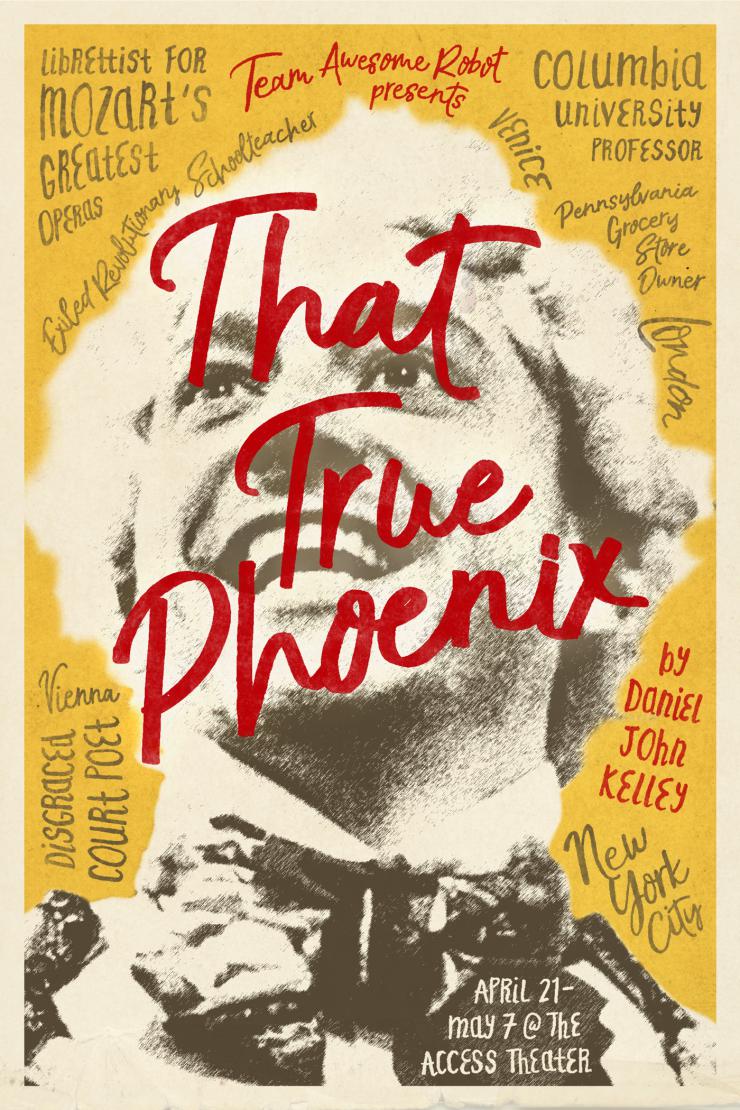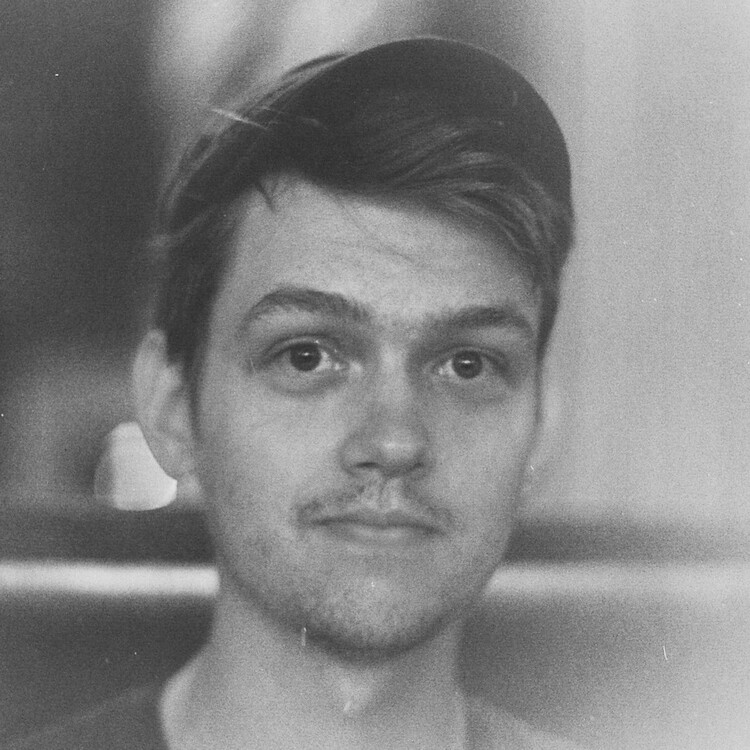Producing Advice from the Company that Named Themselves Team Awesome Robot
Part Three
This is the final installment of the blog series in which we, Team Awesome Robot, chronicle our production timeline.
We are in rehearsals for our production of That True Phoenix and there is a lot going on right now! I’m sure you all know the feeling of eating/sleeping/breathing a play in preparation for opening night; like us, you’re probably addicted to it and need it to live. We work really hard as producers to get to this point right here, so let’s take a quick second to go over what it took before we look forward at what still needs to be done.
There are a lot of spinning plates leading up to a production and the more organized one can be moving into it, the better. It’s like we said in our first blog: Take the time to do it right.
One year ago, in April 2016, we completed the following checklist:
- Content—Develop and produce a new play by Daniel John Kelley exploring the life and legacy of Lorenzo Da Ponte.
- Location—We would produce this in an off-off-broadway sized theatre in Manhattan. These spaces usually operate six months ahead of time, and we don’t have a play yet, so we’ll lock this up when it makes more sense.
- Collaborators—Playwright: Daniel John Kelley; Director: Christopher Diercksen; Producer: Yvonne Hartung; and due to what we knew about the process and end-goal, a lead actor: Curry Whitmire.
- Ethos—This would be an equity showcase code production and all collaborators would get paid the same amount regardless of their position.
Having completed this checklist, we set out to create a budget and set up our fundraising capabilities.
- Our Projected Expenses (performance, rehearsal, and audition space, collaborator stipends, design budgets, insurance, publicist, fundraiser overhead) came out to around $15,000
- At this point (April 2016), we didn’t have a performance space, so couldn’t make any assumptions about revenue from tickets or concessions.
- We’ll be operating off of donations, so it’s wise to work with an umbrella 501c3 organization, like Fractured Atlas. We already had this set up from our last show, but if we hadn’t, this is when we’d do it.
We spent the next six months focusing primarily on developing the content (That True Phoenix), identifying a theatre within our budget, and holding our first fundraiser: Drinking and Dragons with Team Awesome Robot. During this time we shared our enthusiasm about the play with anyone who would listen. Then it was on to phase two of our production calendar.
Six months ago, in October 2016, we completed the following checklist, using personal funds and the money raised by our Drinking and Dragons fundraiser (about $2,000):
- We identified and booked a location: The Access Theater’s Black Box space.
- This allowed us to nail down our performance dates (twelve performances per our equity showcase contract, between April 21 - May 7).
- Having performance dates meant we could build a “best-case scenario” rehearsal schedule. Again, per Equity Showcase contract, this could not exceed five weeks.
- Knowing this allowed us to book rehearsal space ahead of time. Having the same space for a full rehearsal process is a luxury in independent theatre, the effect of which cannot be overstated.
That was the last time we published a blog, so from here on out it’s all new information. The six months leading up to a production are probably the most fast and furious, so I’ll break it down month by month. I cannot stress enough the importance of having a production timeline and to-do lists during this period. There are a lot of spinning plates leading up to a production and the more organized one can be moving into it, the better. It’s like we said in our first blog: Take the time to do it right.
In November of 2016, we planned our last development reading of the script. Up until this point, all of the development work had been done in my apartment, with wine and a rotating cast of actors who are kind enough to make silly voices in exchange for drinking said wine. It’s important to note that, because we spent such a long time not really knowing what we’d need in terms of casting (besides Da Ponte), we strove never to give the impression that any of these readings were doubling as auditions. So, this final reading would serve a dual purpose: a last chance to hear the play before a giving audience, and a celebration of the journey we’d all taken. We secured a space (thank you, Access Theater!) invited our past collaborators, our fiercest supporters, some designers we were interested in working with, and put together a cast.
The other thing that happened in November was Election Night. This isn’t the space for a political diatribe, but the effects that the election had on our audience cannot be overlooked. As theatremakers, we build worlds for an audience to experience a story and in building that world, we must respect where they’re coming from or risk alienating them. So we revisited the tough questions of our content again: Why are we doing this play, at this time, for this audience? Our answers helped guide the final script changes.
In December of 2016, we held that reading (hooray!), navigated the holidays (phew!), and set up meetings with potential designers and production staff. We also sent out an end-of-the-year appeal letter to our past donors in the hopes that they’d include us in their annual charitable gifts. This garnered us enough funds to cover the rest of the remaining deposits for our performance space.
In January of 2017 we searched for our production team collaborators. Given our ethos of paying everyone the same stipend, this is one of the most challenging aspects of our production process. For a variety of reasons, Stage Managers and Designers tend to start making their living off of theatre a lot earlier in their careers than actors, directors, and producers, so finding ones who are willing to take on a passion project is more of a challenge. Our approach to this is always by virtue of the play we’re working on; these are artists, after all. If the piece appeals to their artistic sensibilities then we’re halfway there.

Here’s what we accomplished in January:
- Secured designers
- Secured a publicist
- Secured a stage manager, Assistant Producer, and Assistant Director
- Secured audition space in February
In February, one month out from our first rehearsal, we held auditions. There are a bunch of ways to go about spreading the word to actors about your project, each with their different merits. Big public postings are great at getting the word out, but it requires a lot of organization on the back end when you end up with a tidal wave of submissions. Also, depending on the outlet you’re posting the audition notice, there’s not a ton of quality control. Hiring a casting director is one way to alleviate the stress of this process as they handle posting and correspondence with the auditioners, but they can also be pricey. The alternative is foregoing a public posting and soliciting recommendations from the community. We’re lucky to have made some pretty excellent friends over the last eight years, so when we took this route, we were flooded with recommendations. One thing we could have done better was insist on confirmation from the actors, as there were more than a couple of no-shows. That’s expensive, as we paid for the space and now it’s being wasted. It wasn’t as expensive as hiring a casting director to manage that sort of thing for us, but still: lesson learned.
Which catches us up to present-day. Our final crowdfunding campaign is currently online where we are raising $5,000 to cover the cost of our design budget, collaborator stipends, and other incidentals. We had our first rehearsal this week and are hard at work building the world together. The show will open on Friday, April 21. If you happen to join us, please be sure to introduce yourselves!
We thank you for sharing this space with us and truly hope the detailing of our process has been beneficial to you. We encourage you all to comment and share with your friends. Let’s keep the conversation going—open communication and transparency about how the work happens helps our entire theatrical community to thrive.


Comments
The article is just the start of the conversation—we want to know what you think about this subject, too! HowlRound is a space for knowledge-sharing, and we welcome spirited, thoughtful, and on-topic dialogue. Find our full comments policy here
Great work & documentation! Can't wait to see the show!
Thanks Kathleen! We can't wait to share it with you.
What a great read this series has been! I'm in the midst of preparing for my first show (writing and directing) at the Vancouver Fringe this fall. I work as a professional stage manager so getting my indie shoes back on has been enlightening to say the least. Your posts have offered a lot of insight - especially as my writing partner and I are thinking of founding our own company. It's great to see how you work to develop your audience to your company in addition to your show. Best of luck in rehearsals and cheers to a great run!
Thanks for these kind words, Jessica. Best of luck with your show!